Teams of USF engineering students demonstrated their interactive and hands-on projects at a public showcase on April 28 at the Tampa Museum of Science and Industry (MOSI).
Called Minds and Machines, the afternoon demonstration offered students in the USF mechanical engineering program the opportunity to demonstrate their work to both peers and the public who were visiting MOSI.
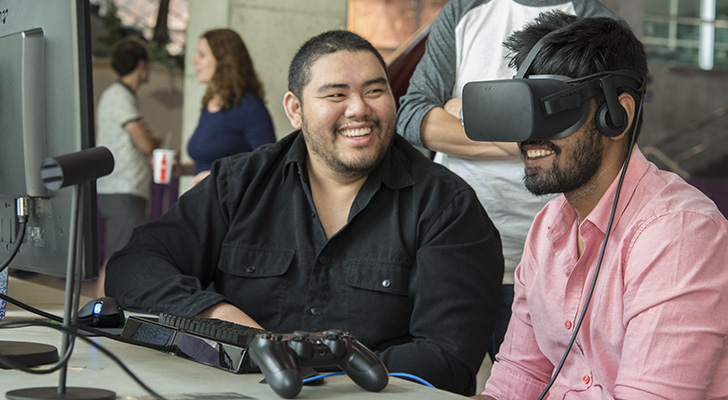
“The goal of the event was to offer students an opportunity to take what they learned in class and apply it in the development of new designs and mechanisms that solve problems, then create a working prototype of it,” said Craig Lusk, PhD, associate professor in the USF Department of Mechanical Engineering.
The event also helped students sharpen skills for explaining their work to an audience that might have little engineering background, said Kyle Reed, PhD, associate professor in the USF Department of Mechanical Engineering.
“Whether they explain it to another engineer, to a 7-year-old, or to a 70-year-old, this practice helps them when they go out into industry,” Dr. Reed said. “The public exposure also motivated students to step up their game for their projects.”
The event included undergraduate and graduate students from three areas of coursework: haptics, which is the study of the sense of touch and how it relates to perception and manipulation of objects; kinematics and dynamics, which is the study of motion; and compliant mechanisms, which examines flexible mechanisms that transfer a force or displacement to another point.
With more than 160 students making up the 60 teams, the demonstration at MOSI was also a competition, with class peers voting on what worked best. This year’s winner was
The winner of the Kin/Dyn class was a group of four student: Samuel McCandless, Evan McLendon, John Goly and Jacob Nesler, who made a “Shable” a vertical shelf that could transform into a horizontal table. The Compliant Mechanisms winner was Brian Cantler, who made a 2-wheel rolling robot with shape-morphing wheels, which helped it roll and turn
The 60 teams offered a range of projects that conducted a wide range of tasks. One such was a backwards bicycle that was built to steer the opposite of what you might think – so that turning the handlebar right actually turns the bicycle left.
The idea actually could help researchers better understand how the human brain relearns fundamental skills, which could be applied to help in the area of patient rehabilitation, such as when someone recovering from stroke relearns how to walk to improve their gait.
This backwards bicycle is just one example of many demonstrated at MOSI. Other projects titles included: Vibratory Feedback on Posture; Backward Brain Bicycle; Balance-Assisting Waist Belt; Bimanual Guidance Methods; Virtual Reality for Rehabilitation; Simon Says...Haptic Version, Ultrasonic Vibration Gloves; IKEA© or Standard Shopping Carts?; Automatic Slicers; Catapult Launching Things; and Hydraulically-Driven Robot Arm.
The April event was the first time the demonstration took place at MOSI. Currently, the demonstration takes place every other year. But both Drs. Reed and Lusk agreed that the success of this year’s event at MOSI has them thinking about offering the event every year and at MOSI.
“This science fair approach helped the students turn their projects into something real, and then defend the work in front of both their peers and the general public,” Dr. Lusk said. “They were both intimidated and motivated by it. Explaining and defending your work is a big part of being an engineer.”
Using this as a practice run, some students – those with successful projects – will go on to regional and national competitions and/or conferences to present their work.
Summing it up, Dr. Reed added: “They took a cool idea, defined a solution to a problem, and created a new set of tests to validate their solution. That’s the essence of being an engineer.”

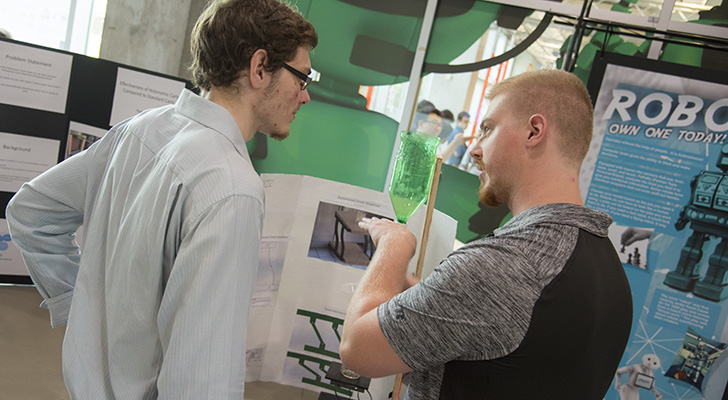
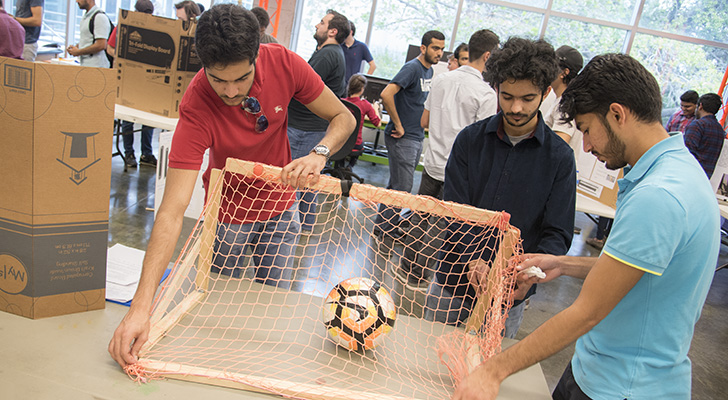
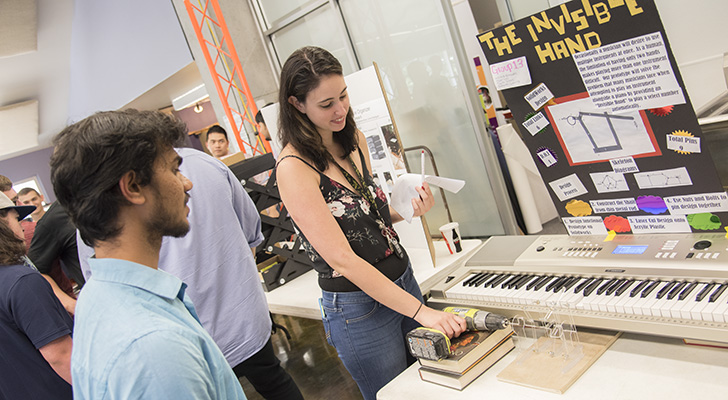
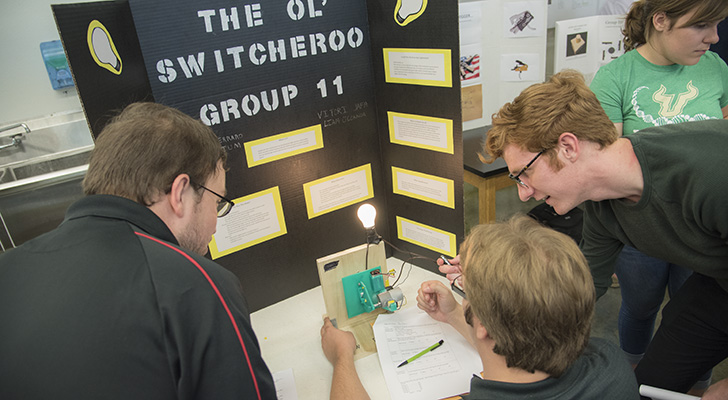
Story by Sarah Worth, photos by Ryan Noone, USF Communications